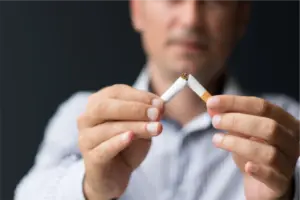
Air pollution is killing more than 500 people every week across the United Kingdom, according to a new report from the Royal College of Physicians (RCP). The pollution is also costing the UK more than £500 million weekly in NHS care, lost productivity, and ill health.
The report warns that 99% of the population is breathing “toxic air,” which is linked to nearly every major organ disease, from heart disease to lung disease to cancer, dementia, and even poor foetal development.
“Air pollution remains the most important environmental threat to health,” wrote England’s Chief Medical Officer, Prof Chris Whitty, in the foreword. Despite progress in reducing some pollutants, it continues to drive tens of thousands of preventable deaths annually.
Also Read | Only 7 Countries Met WHO Air Quality Standards in 2024 as Pollution Crisis Deepens
Current estimates suggest 30,000 UK deaths a year are attributable to dirty air, with financial costs topping £27 billion annually. That figure could rise as high as £50 billion when the full health burden is included.
Exposure to air pollution shortens lives by an average of 1.8 years, putting it “just behind smoking and cancer among the world’s top killers”, the report added.
Dr Mumtaz Patel, president of the RCP, said air pollution is no longer just an environmental concern. “It is a public health crisis. We are losing tens of thousands of lives every year to something that is mostly preventable, and the financial cost is a price we simply cannot afford to keep paying,” she added.
Meanwhile, a report by Asthma + Lung UK found that 1 in 5 people with lung disease had experienced life-threatening asthma attacks or flare-ups triggered by toxic air. The charity’s chief executive, Sarah Sleet, called it “a public health emergency” and slammed the government for its “lack of political will”.
In response, the government said it remains committed to reducing air pollution, highlighting £575 million in funding provided to local authorities. A spokesperson added that new interventions are being developed to reduce public exposure to harmful emissions.








